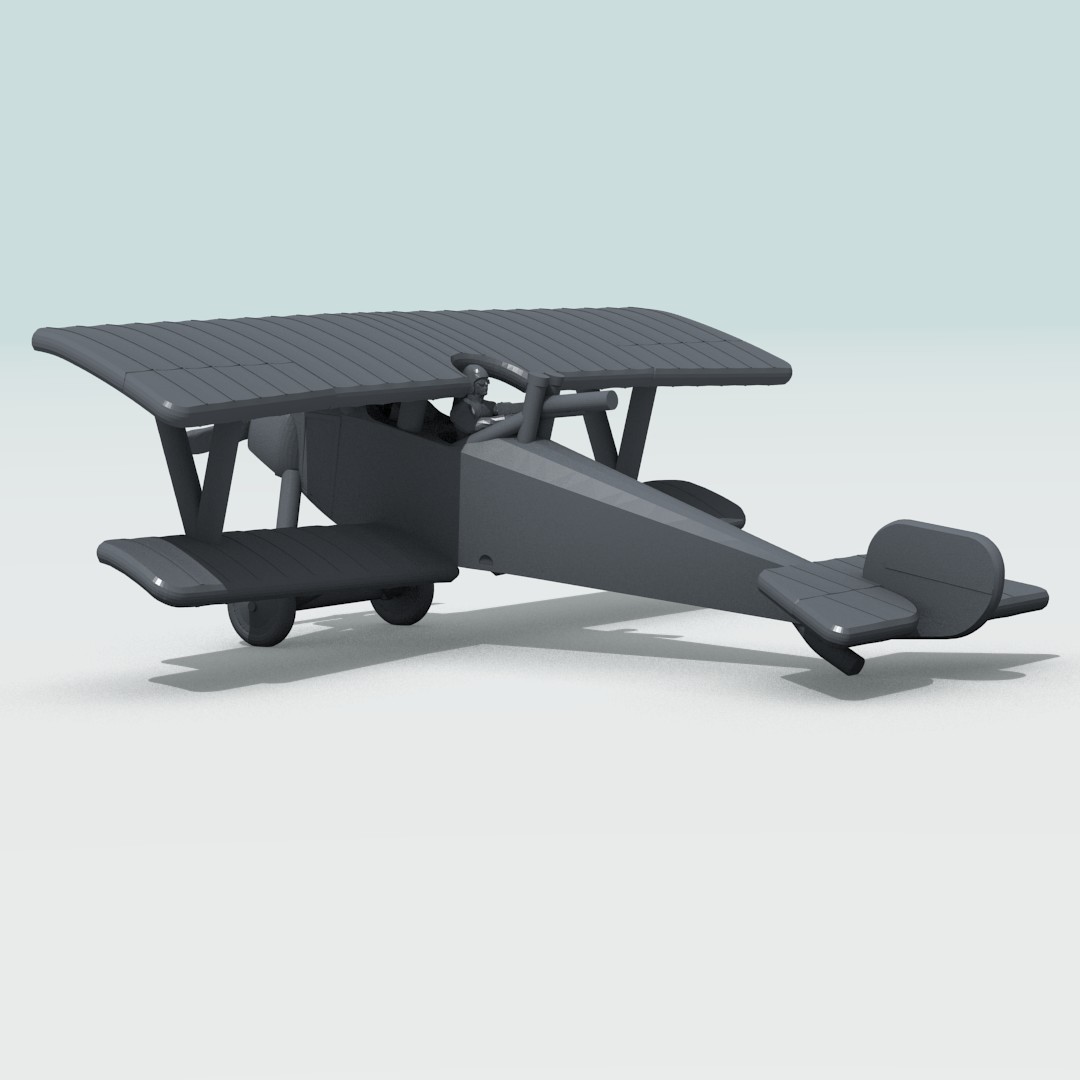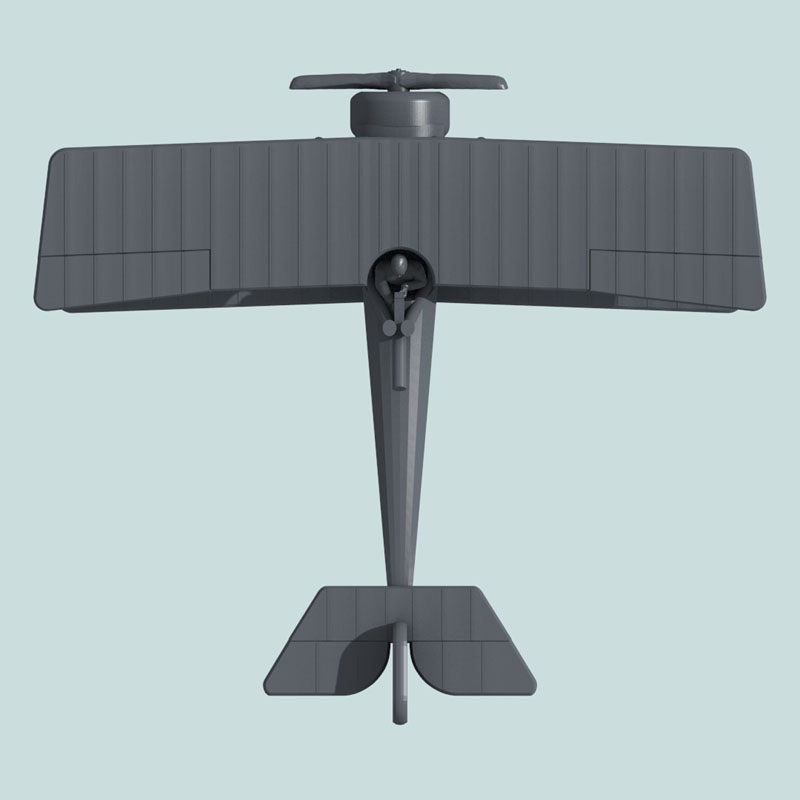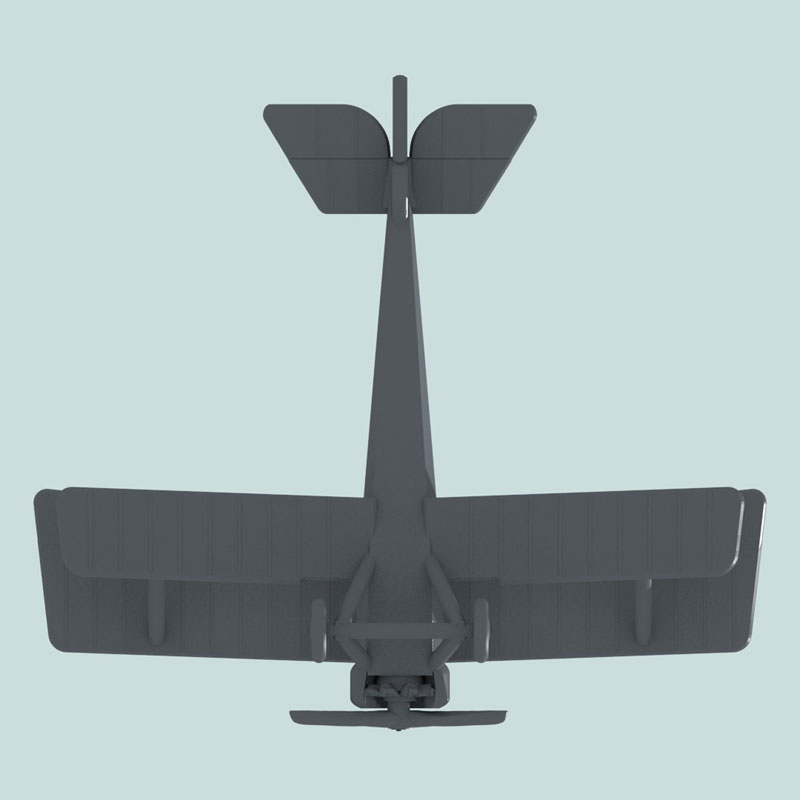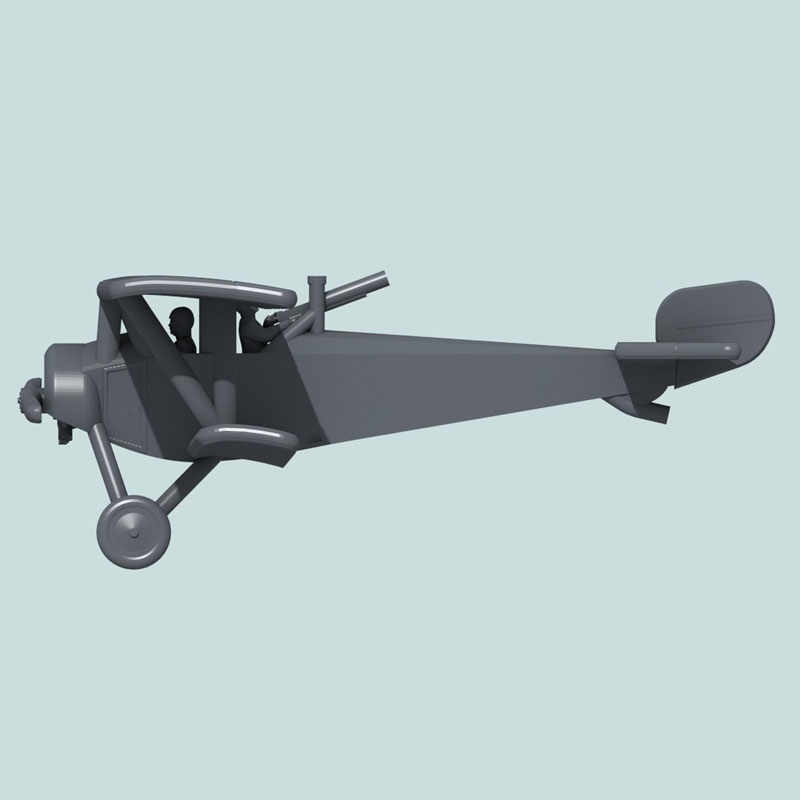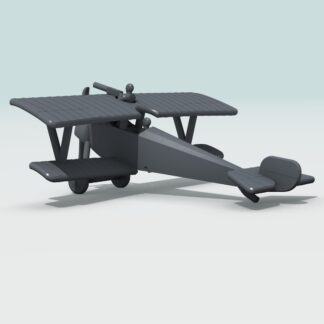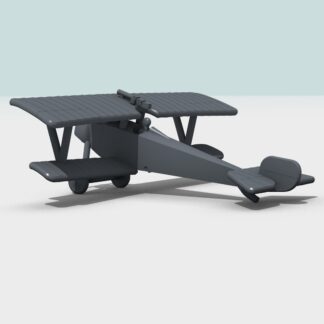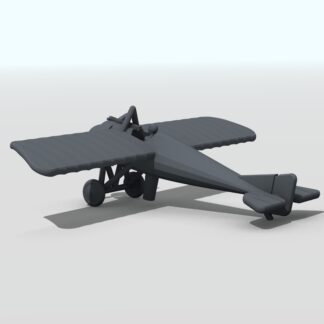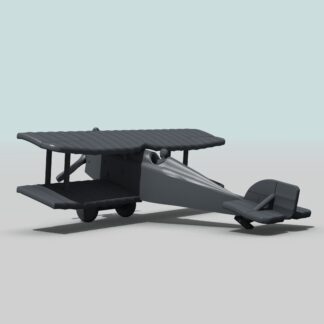Description
This is a paintable 1:144 scale model of a Nieuport 10 two-seater with a rear-seat observer. Four different Nieuport 10s are available: an unarmed two-seater, a single-seat fighter, a 10AR with a standing front-firing gunner, and this Nieuport 10AV with a rear-firing gun. Since many painters choose their own mounting system, no peg is included on the plane. Pegs can be purchased separately in the Accessories section of this catalog.
This Nieuport 10AV is a two-seater with the observer in the rear seat with a machine-gun on an Éteve mount.
The Nieuport 10 set design trends that would influence the next several years of Nieuport design as well as enemy planes, chiefly by the use of the 1½ “sesquiplane” layout with a reduced-profile lower wing and vee-struts, which gave it excellent downward sight lines. One design decision that was not retained on later planes was a variable-incidence lower wing that could be modified depending on the plane’s engine and load. Crew position varied — on the type AV the pilot was forward, on the Type AR, in the rear, and the Nieuport 10 was also sometimes flown as a single-seater. As its career progressed the Nieuport 10 saw less use as a two-seat reconnaissance plane role (for which it was underpowered) and more as a single-seat fighter. Gradually over the course of 1915 the were replaced with the Nieuport 11 in the fighter role and Nieuport 12 for reconnaissance.
Nieuport 10s served briefly with Belgium in mid 1915. Italy used it as a fighter from mid 1915 through the end of 1916, when they began to be phased out for Nieuport 11s and 17s, though a few continued service through 1917. They served with eight squadrigliae, frequently being mixed with other types such as Farman M.F.11s and (as they became available) Nieuport 11s. 240 were built by Nieuport-Macchi and probably 500 were acquired by Italy in total.
Russia acquired a few from France before building their own in the Dux and Lebedev plants with various engines, where they were mostly used as single-seat fighters until 1917, when they transitioned to reconnaissance. They used the designation Nieuport 9 for the single-seat version with the front cockpit decked over, an upper-wing non-synchronized gun, and a pilot’s headrest. About seven hundred 9s and 10s were built in Russia.
For more data and gaming info on this plane, see https://linen.miraheze.org/wiki/Nieuport_10.
Shipping: Shipping varies from about US$7 to US$15 per order, depending on the destination country. See your cart for an exact number — the prices may vary with currency fluctuations. Orders over US$300 may get free shipping (but see the note on mixed materials).
Mixed Materials: Nylon prints are shipped from a different factory than resin prints, so if you place an order with a mix of Nylon and Resin, you will be charged shipping for each material, and each will arrive separately.
Taxes: Sales tax — where applicable — will be added for U.S. shipments. Value-added taxes (VAT) may (or may not) be collected by your postal carrier on receipt, which is known as “Delivery At Place”. Unfortunately, since my printing and shipping partner has no way of marking shipments as VAT-paid, this website cannot collect VAT on your behalf.
Customs: Most orders should be small enough to avoid customs duties, but you may want to check your local regulations. If duties are due, they may be collected by your postal carrier. E.U. customers may be able to avoid duties by keeping their order under €150.
No refunds are available, because your order is custom-printed when it is received. There is no inventory or stock to which it can be returned.
Reprints are available for planes damaged during shipping. See https://www.greatwarplanes.com/refund_returns/ for details.
Grey Resin: Models printed in Grey Resin material are printed with sprue-style supports while they are printed. The supports are removed in the factory before shipping. But be aware that some of the supports might be missed if they are mistaken for plane parts, and some of the attachment points might need smoothing before painting. I have seen good results — with almost no visible leftovers — in test prints. But this may not be universal because it depends on whoever is operating the printer the day your miniature is printed.
Bent Wings: Due to the need to protect miniatures during shipping, the miniatures may arrive with wings that are not perfectly straight (or, in the case of wings with dihedral, at the right angle)¹. If the warping is too severe, or if correcting it results in a broken plane, you can apply for a reprint as outlined above. To correct modest warping, you can heat the model with hot water or with a blow-dryer until the wings become pliable, straighten them, and then cool the model with cool water or room-temperature air. (I have used the blow-dryer method with good success.) I do not know what temperature is best — you’ll have to experiment, starting on the low side and using only gentle pressure. You just want to make the model pliable without it melting (too hot) or breaking under gentle pressure (too cool). Please use the normal precautions you’d use with any operation with hot water, air, and plastic.
Since — as you have gathered — you can bend the model when it’s under high temperature, I would suggest avoiding leaving your prints in a very hot environment such as a locked car under the summer sun.
¹ This was especially true during a period when the planes were shipped in a clamshell-plastic case, which should no longer happen.

